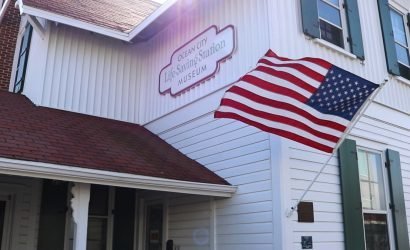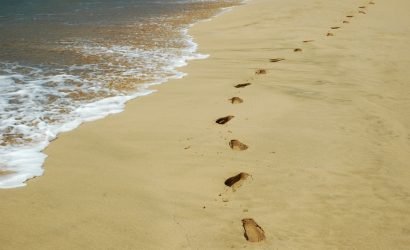 |
|
Tower locations include:
Tower 1 — Bethany Beach, DE
Tower 2 — Indian River, DE
Tower 3 — Dewey Beach, DE
Tower 4 — Dewey Beach, DE
Tower 5 — Lewes/Rehoboth, DE
Tower 6 — Lewes/Rehoboth, DE
Tower 7 — Lewes, DE
Tower 8 — Broadkill Beach, DE
Tower 9 — Cape May, NJ
Tower 10 — Wildwood Gables, NJ
Tower 11 — North Wildwood, NJ
|
Across the Eastern Seaboard of Delaware, 11 cylindrical concrete towers rise above the coastal plains and marshes and overlook the Atlantic. The towers were created between 1939 and 1942, used as watch towers during World War II, and expected to stand for only 20 years. 70 years later, the towers are still upright and still tell a chilling story.
There are 11 watch towers in Delaware and southern New Jersey. During the early ‘40’s, the United States Army was commissioned to build the towers. Known as ‘fire towers’, these simple statuesque buildings range in size from 50-feet to 64-feet high.
Currently, only one tower is open to the public. The Cape Henlopen tower was opened to the public through a partnership between the Delaware Seashore Preservation Foundation and The Fort Miles Historical Association.
Efforts have been underway to restore a second tower, Tower #3, for years now. Tower #3 is located inside of the Delaware Seashore State Park just south of Dewey Beach, DE. Tower #3 was built in 1942 and cost the US Army $17,900 to build. Restoration groups have a set a budget of $500,000 to preserve the tower.
Like the Henlopen tower, Tower #3 will be open to the public and for tours.
On a clear day, visitors atop the Cape Henlopen tower can see 14-and-a-half miles of coastal scenery. During World War II, soldiers monitored the same coastlines as they searched for approaching enemy ships or stealthy submarines.
“The towers were the eyes of the fort,” said Gary Wray, president of the Fort Miles Association.
Wray continued to explain how the towers were used in pairs to triangulate large defense guns at Cape Henlopen. Soldiers would take readings on offshore targets. Those readings would then be radioed back to a gunnery room at Fort Miles (a symbolic fort that encompassed land in Delaware, Pennsylvania and New Jersey). The triangulation calculations were turned into coordinates. 12” and 16” barreled guns were positioned along the coast, hidden in sand dunes and camouflaged in salt grass, and fired in the direction that coordinated with the incoming enemy ships. The barreled guns could shoot a 2,700 pound shell about 25 miles.
The soldiers were good at watching for Nazi ships. They’d climb rope ladders – 5 stories worth – to perch in their watch towers and scan the horizon. Impeding German submarines patrolled the East Coast and sunk one US ship per week. More than one-hundred US sailors were killed in one submarine attack off of the Delaware Coast during a Mid-Atlantic siege.
Cape Henlopen Park offers visitors a chance to see the large guns used during the war and bunkers hidden in the dunes. A three-mile pathway encompasses the park and is dotted with plaques explaining the significance of Delaware’s participation during World War II. To find out more about the park, check out their website: Cape Henlopen State Park.
Money is still being raised to help fund the restoration of Dewey’s Tower #3. To find out more about restoration efforts, visit Save the Tower on the web.
Photos by Ami Reist.









